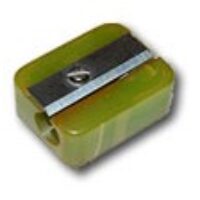Used to be, a TV set had a remote control (used to be, farther back, it didn’t; but that’s prehistory). These days, however, everything has a remote control; indeed, I can’t wait for someone to create a tiny remote control for the larger remote control itself! 🙂
 The proliferation of these gadgets has created a real problem, and home electronics makers are responding by creating R/C units that can control more than one item; most typically, a TV set and the DVD, PVR or VCR feeding it.
The proliferation of these gadgets has created a real problem, and home electronics makers are responding by creating R/C units that can control more than one item; most typically, a TV set and the DVD, PVR or VCR feeding it.
Which is all very well, but how do you make one control work on many devices without confusing the user? There are different ways, and they vary in their usability a great deal. Let me illustrate with three units from my home: the remotes for (left to right) our LG recording DVD, our old Sony VCR, and the HOT cable company’s PVR. The first two can also control our Sony TV; the red one controls the cable box, the TV and a DVD or VCR. And each goes about the choice of function in a different manner, seen in the close-up photo.

The R/C on the left simply has a section at the right dedicated to controlling the TV, with its own On/Off switch and channel and volume controls. This results in some redundancy with the controls of the DVD (which also has power and channel controls) but it completely eliminates any possibility of confusion.
The VCR controller in the middle incorporates a disappearing species – a mechanical slide switch at the top that determines what device is being controlled. The buttons on this unit change their role depending on the position of the switch, and have color coded dots to indicate whether they apply to the TV. Having to slide the switch is a bit more of a hassle than with the black R/C but at least you get definite visual feedback of which position you’re in.
The red unit works like this: you have to press the button (in the second row) corresponding to the device you wish to control; then, until you press another of these buttons, the unit controls that device. This is for sure the cheapest to produce; it’s all in the electronics. The price you pay is that there is no visual feedback at all; if you forget what you pressed, you will find yourself changing channel or cycling the power on the wrong equipment. There is also no labeling of which buttons work with which device.
All of these units do their job, but to my mind their user friendliness goes down from left to right. Not surprisingly, so does the cost to produce them…


 But the most amazing device is one I snapped in a restaurant today: a nylon bag filled with water, hanging from the rafters (I’ve also seen them hanging from tree branches occasionally). And this traditional system is in use not only in Israel – as I discovered in Google,
But the most amazing device is one I snapped in a restaurant today: a nylon bag filled with water, hanging from the rafters (I’ve also seen them hanging from tree branches occasionally). And this traditional system is in use not only in Israel – as I discovered in Google, 




 I the end I settled on a Dell 2208WFP, a nicely designed 22 incher. And when I got it hooked up at home, lo and behold, the text was just a little bit fuzzy. I did the Reset thing but to no avail. I played with the brightness and contrast – still no use. And then I explored the menus further and guess what? They had a setting called Sharpness! It was at 50%; I jacked it up and the monitor achieved that exquisite crispness I’d come to expect of Dell monitors.
I the end I settled on a Dell 2208WFP, a nicely designed 22 incher. And when I got it hooked up at home, lo and behold, the text was just a little bit fuzzy. I did the Reset thing but to no avail. I played with the brightness and contrast – still no use. And then I explored the menus further and guess what? They had a setting called Sharpness! It was at 50%; I jacked it up and the monitor achieved that exquisite crispness I’d come to expect of Dell monitors.

